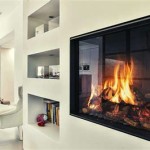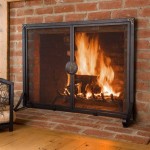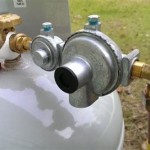DIY Indoor Propane Fireplace: A Comprehensive Guide
The allure of a fireplace, with its comforting warmth and captivating flames, is undeniable. While traditional wood-burning fireplaces require extensive infrastructure and constant maintenance, indoor propane fireplaces offer a clean, efficient, and readily installable alternative. This article provides a detailed guide to understanding the process and considerations involved in a DIY indoor propane fireplace project.
Propane fireplaces operate by burning propane gas to generate heat and create the visual effect of a fire. They offer several advantages, including ease of use, consistent heat output, and reduced environmental impact compared to wood-burning alternatives. Furthermore, they eliminate the need for chimney construction in many installations, simplifying the installation process. However, ensuring safety and adherence to local codes is paramount when undertaking such a project.
Understanding Propane Fireplace Components
Before commencing the installation, it's crucial to grasp the fundamental components of a propane fireplace. The key elements are: the firebox or fire enclosure, the burner assembly, the propane gas line, the control valve, and the decorative elements such as logs or glass. Each component plays a critical role in the fireplace's operation and overall safety.
The firebox, usually constructed from metal, contains the flames and directs heat output. The burner assembly mixes propane and air to create a controlled and stable flame. The gas line delivers propane to the burner assembly, regulated by a control valve that allows for adjusting the flame height and heat output. Decorative logs or glass panels are placed strategically to mimic the look of a real fire, enhancing the aesthetic appeal.
Selecting the correct size and type of fireplace is also important. Propane fireplaces are available in various sizes and heat outputs, measured in British Thermal Units (BTUs). Consider the room size and desired heat output to choose a fireplace that adequately heats the space without overheating it. Direct-vent, vent-free, and B-vent models are available, each with unique ventilation requirements and installation considerations. Consulting local building codes is essential to determine which types are permitted in the chosen location.
Planning and Preparation for Installation
Effective planning is crucial for a successful DIY propane fireplace installation. Begin by thoroughly assessing the designated location for the fireplace. Evaluate the proximity to existing gas lines, the structural integrity of the wall or floor, and the clearance requirements from combustible materials. Most manufacturers specify minimum clearance distances in their installation manuals, ensuring safe operation and preventing fire hazards.
Acquiring the necessary permits from local building authorities is non-negotiable. Permitting ensures that the installation meets safety standards and complies with local regulations. The permitting process typically involves submitting detailed plans and specifications for review. Engage with local inspectors to understand requirements specific to the area.
Gathering the required tools and materials before starting the actual installation saves time and prevents delays. Essential tools include a pipe wrench, gas leak detector, level, drill, safety glasses, and work gloves. Materials include propane-rated gas pipes, fittings, shut-off valves, thread sealant, and the fireplace unit itself. Ensuring that all materials meet applicable safety standards and are approved for use with propane is critical.
Step-by-Step Installation Process
The installation process should strictly adhere to the manufacturer's instructions and all relevant safety protocols. Failure to do so can result in hazardous conditions, including gas leaks or carbon monoxide poisoning. The following steps outline a general installation procedure, but always prioritize the manufacturer’s guidelines.
First, install the propane gas line. This typically involves connecting to an existing propane line with a T-fitting and running a new line to the fireplace location. Ensure the gas line is properly sized to handle the fireplace's gas consumption. Use approved thread sealant on all threaded connections to prevent leaks. Always test the gas line for leaks using a gas leak detector after installation. A soapy water solution applied to connections can also visually indicate leaks through bubble formation.
Next, install the fireplace unit itself. This might involve mounting it on a wall or placing it on a hearth. Ensure the fireplace is level and securely fastened. Connect the gas line to the fireplace's control valve, again using approved thread sealant. Connect the venting system. The venting requirements vary depending on the type of fireplace. Direct-vent fireplaces typically require a coaxial vent pipe that exhausts flue gases and brings in fresh air. Vent-free fireplaces do not require venting but rely on adequate ventilation in the room. B-vent fireplaces require a dedicated vent pipe that connects to a chimney or vent termination.
Finally, install the decorative logs or glass panels according to the manufacturer's instructions. These elements are often designed to be placed in specific arrangements to ensure proper flame distribution and aesthetic appeal. Once the decorative elements are in place, perform a final leak test and inspect all connections. After this, initiate the startup procedure as outlined in the manufacturer’s manual. Observe the flame pattern and ensure consistent, even burning. Address any irregularities immediately.
Safety Precautions and Considerations
Safety is paramount throughout the entire DIY propane fireplace installation process. Always shut off the main propane supply before working on gas lines. Work in a well-ventilated area to prevent the accumulation of gas. Wear safety glasses and work gloves to protect against injuries. Never smoke or use open flames near the gas lines.
Install carbon monoxide detectors in the vicinity of the fireplace. Carbon monoxide is a colorless, odorless gas that can be deadly if inhaled. Regularly test the detectors to ensure they are functioning correctly. Consider installing a propane gas detector as an additional safety measure.
Regular maintenance is crucial for the long-term safe and efficient operation of the propane fireplace. Clean the burner assembly and venting system periodically to remove debris and soot. Inspect the gas lines and connections for leaks. Schedule annual professional inspections to ensure the fireplace is operating correctly and safely. Professional inspections can identify potential problems before they become hazardous.

Diy Gas Fireplace

The Fireplace Is Done Indoor Gas Propane Vented

Diy Fireplace And Mantel Build A Home

How To Build A Propane Fire Pit Using Gabion Baskets Diy Family Handyman

Diy Gas Fireplace Surround Modern Remodel

This Fire Pit Has Been Constructed Within A Rustic Timber Table Via Renoguide Pallet Diy Propane

How To Modernize And Update A Gas Fireplace We Love Fire

Install A Gas Fireplace Framing Finishing Pt 2 Diy Living Room Remodel

How To Install A Gas Fireplace Diy Built In

How To Make A Backyard Fire Pit For
Related Posts








